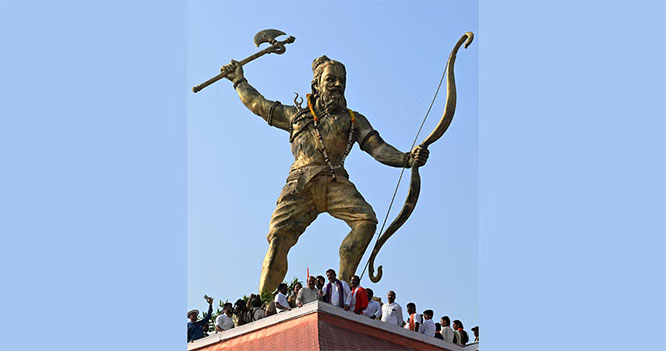The energy-sensitive rupee hit a lifetime low in early trading on Monday as a sharp surge in global crude oil prices to above $130 threatened to push up imported inflation and widen the country's trade and current account deficits.
The Indian rupee was trading nearly 1 per cent weaker at 76.92 per dollar after touching 76.96, its weakest level ever. On Friday, the rupee fell to close at 76.17 against the US dollar, its lowest closing level since December 15, 2021.
The rupee has declined against the US dollar as intensifying geopolitical risks due to the Russia-Ukraine conflict pushed investors to the greenback's safe-haven appeal.
The yen and the dollar were trading stronger as investors moved towards safe-haven assets. The dollar index, which gauges the greenback's strength against a basket of six currencies, rose 0.29 per cent to 98.93 in early Monday trade.
Forex traders said escalating tensions between Russia and Ukraine kept crude oil prices elevated and heightened worries about domestic inflation and broader trade deficits.
Oil prices soared above $130, their highest since 2008 on Monday, after a US and European ban on Russian oil imports risk and delays in Iranian talks fuelled tight supply fears.
What has not helped is sustained foreign fund outflows from Indian capital markets. That was reflected in weaker domestic bourses, with the Sensex crashing over 1,400 points and the Nifty below 15,850.
According to stock exchange data, foreign institutional investors remained net sellers in the capital market on Friday as they offloaded shares worth ₹ 7,631.02 crore.
Besides, sustained foreign fund outflows and a lacklustre trend in domestic equities also weighed investor sentiment.
"India's traditionally non-interventionist central bank may allow further depreciation of Asia's worst-performing currency since the start of the Ukraine conflict in the hope that a weaker rupee will increase export competitiveness and assist close gaps presumably widening due to rising oil costs," said Kshitij Purohit, Lead for International and Commodities at CapitalVia Global Research.
"Unprecedented turmoil over the last few decades has shown that the odds are stacked against the local currency. The local currency was also pushed down by persistent foreign fund outflows and a negative trend in domestic markets," he added.








Comments
Add new comment